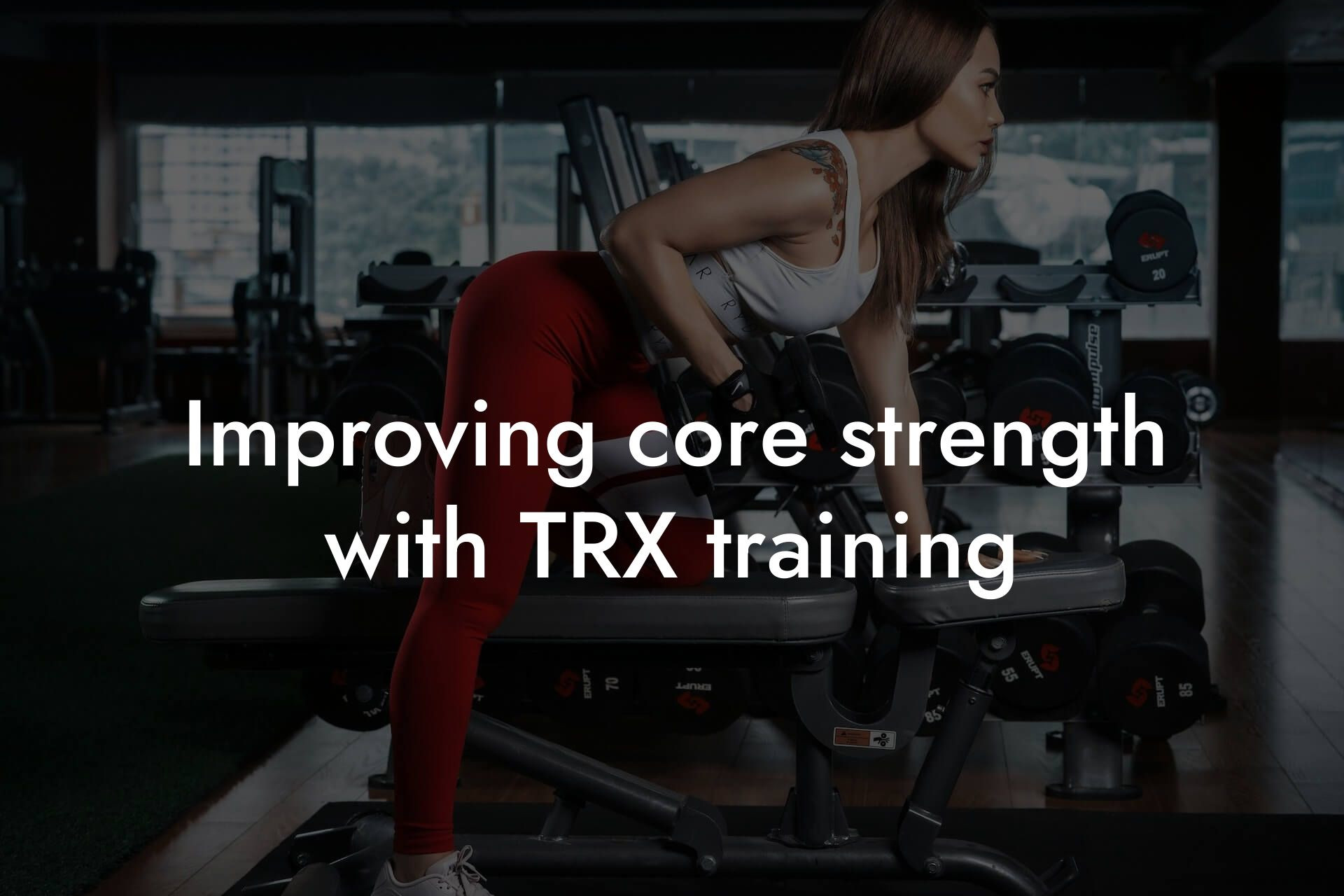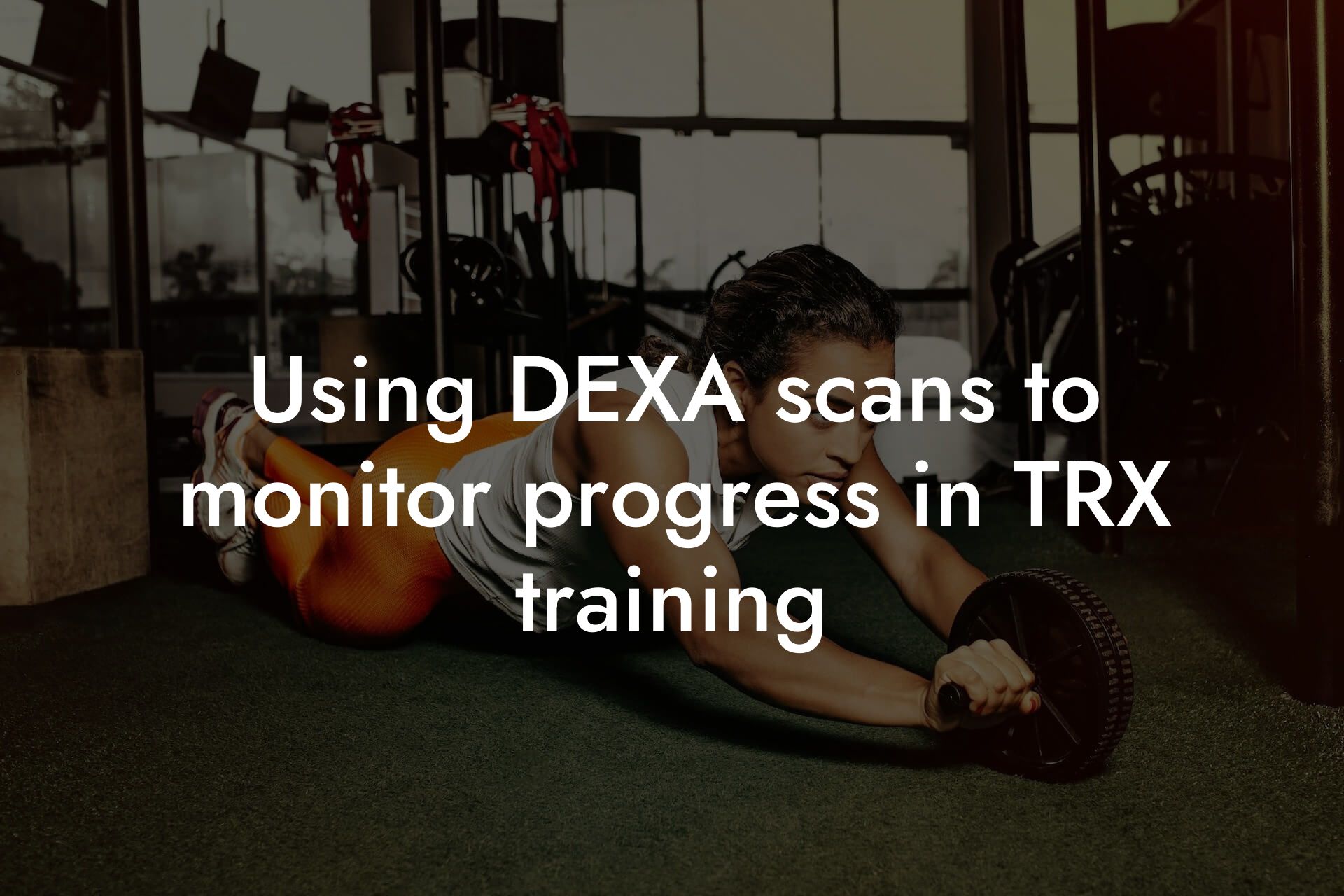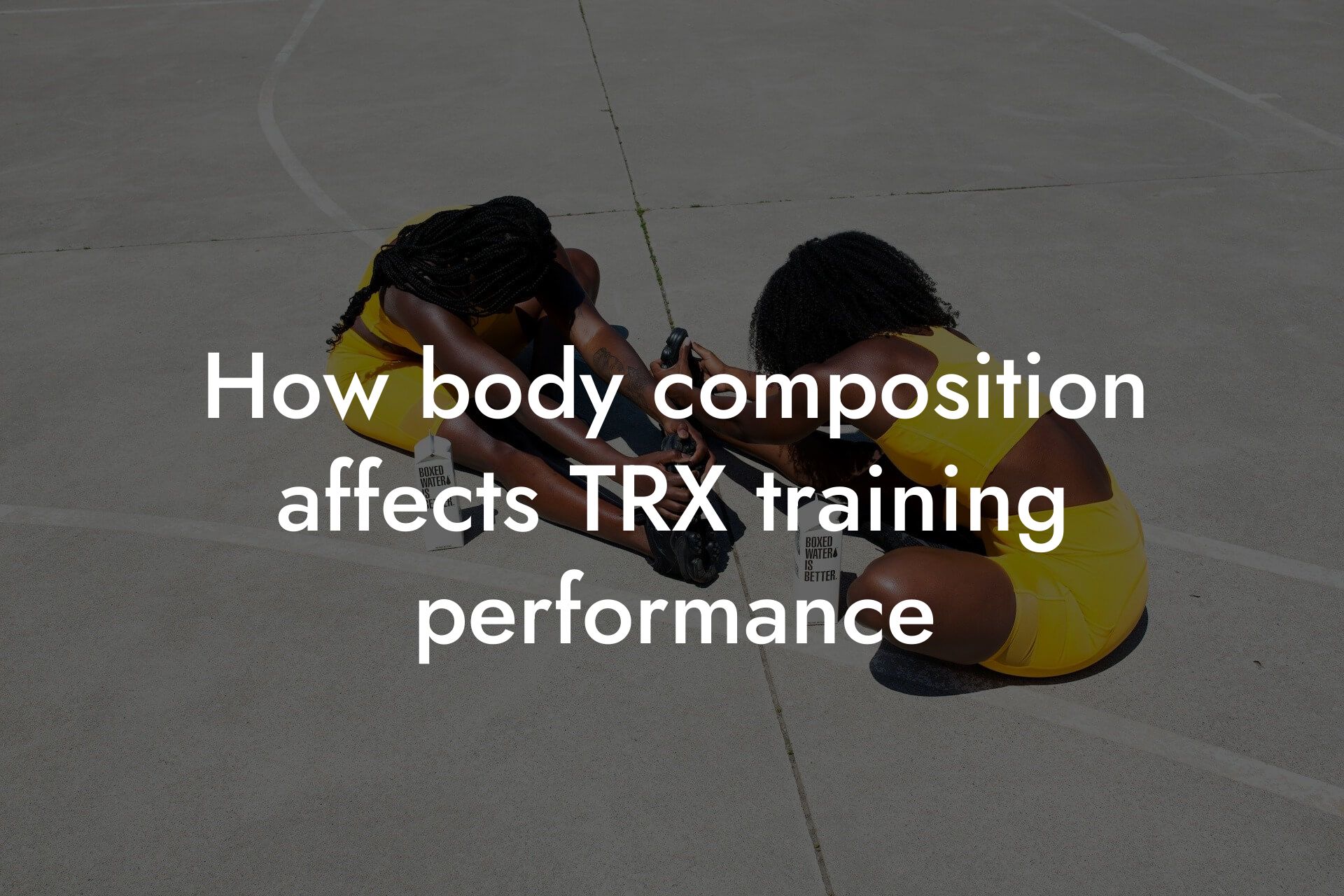Bone density is a crucial aspect of overall health and fitness, particularly for individuals who engage in high-intensity exercises like TRX training. As a high-earning professional, you understand the importance of maintaining a healthy physique, body fat percentage, and bone density to perform at your best. In this article, we'll delve into the significance of bone density in TRX fitness, how it affects your performance, and what you can do to maintain optimal bone health.
Table of Contents
What is Bone Density?
Bone density refers to the measure of how much calcium and other minerals are present in your bones. It's a key indicator of bone strength and health. Peak bone density is typically reached in early adulthood, and from then on, it's a gradual decline. However, with regular exercise, a balanced diet, and proper nutrition, you can maintain healthy bone density throughout your life.
Why is Bone Density Important in TRX Fitness?
TRX training involves suspension exercises that engage multiple muscle groups simultaneously, which can be intense and demanding on your bones. As you perform exercises like squats, lunges, and planks, your bones are subjected to stress and impact. If your bone density is low, you're more susceptible to injuries, fractures, and osteoporosis. Conversely, having optimal bone density enables you to perform TRX exercises with confidence, reducing the risk of injury and improving overall performance.
How Does TRX Training Affect Bone Density?
TRX training can have both positive and negative effects on bone density. On the positive side, TRX exercises can help improve bone density by:
- Stimulating osteogenesis (bone growth) through resistance training
- Increasing muscle mass, which helps support bone health
- Improving balance and coordination, reducing the risk of falls and fractures
However, if you're not careful, TRX training can also have negative effects on bone density, such as:
- Overtraining, leading to bone fatigue and increased risk of injury
- Insufficient recovery time, hindering bone repair and growth
- Imbalanced training, neglecting certain muscle groups and putting excessive stress on others
Risk Factors for Low Bone Density in TRX Fitness
Several factors can increase your risk of low bone density, including:
- Age: Bone density naturally declines with age
- Gender: Women are more likely to experience bone loss, particularly after menopause
- Family history: If your parents or grandparents had osteoporosis, you're more likely to develop it
- Low body mass index (BMI)
- Inadequate calcium and vitamin D intake
- Smoking and excessive alcohol consumption
- Sedentary lifestyle
How to Maintain Optimal Bone Density for TRX Fitness
To maintain optimal bone density for TRX fitness, focus on the following:
- Consume a balanced diet rich in calcium, vitamin D, and protein
- Engage in regular weight-bearing exercises, such as TRX training, weightlifting, or running
- Incorporate high-impact exercises, like jump squats or box jumps, to stimulate bone growth
- Get enough sleep (7-9 hours) to aid in bone repair and growth
- Manage stress through techniques like meditation or yoga to reduce cortisol levels
- Get regular DEXA scans to monitor your bone density and adjust your training accordingly
The Role of DEXA Scans in TRX Fitness
A DEXA (Dual-Energy X-ray Absorptiometry) scan is a non-invasive, painless test that measures bone density. As a high-earning professional, investing in regular DEXA scans can help you:
- Track changes in bone density over time
- Identify areas of concern, such as low bone density in the hips or spine
- Adjust your training and nutrition plan to optimize bone health
- Monitor the effectiveness of your training program and make data-driven decisions
In conclusion, bone density plays a critical role in TRX fitness. By understanding the importance of bone density, identifying risk factors, and taking proactive steps to maintain optimal bone health, you can perform at your best, reduce the risk of injury, and achieve your fitness goals. Remember, regular DEXA scans are essential in monitoring your bone density and making informed decisions about your training. At Tano Performance Group, we're committed to helping high-earning professionals like you achieve optimal physical performance and overall well-being.
Frequently Asked Questions
What is bone density and why is it important in TRX fitness?
Bone density refers to the measure of how dense and strong your bones are. It's a crucial aspect of overall health, especially in TRX fitness, as it directly affects your risk of injury and ability to perform exercises effectively. Having high bone density means your bones can withstand the stresses and strains of exercise, reducing the likelihood of fractures and osteoporosis.
How does TRX fitness impact bone density?
TRX fitness, which involves suspension training, can have a positive impact on bone density. The weight-bearing exercises and movements in TRX help stimulate bone growth and density, particularly in the hips, spine, and wrists. This is especially beneficial for individuals with osteoporosis or those at risk of developing it.
What are the risks of low bone density in TRX fitness?
Low bone density can increase the risk of fractures and osteoporosis, which can be debilitating and even lead to long-term disability. In TRX fitness, low bone density can also lead to poor performance, as weak bones may not be able to support the demands of exercise. Additionally, low bone density can make it more challenging to recover from injuries, leading to prolonged downtime and decreased overall fitness.
How can I improve my bone density through TRX fitness?
To improve bone density through TRX fitness, focus on exercises that involve weight-bearing movements, such as squats, lunges, and planks. Incorporate exercises that target multiple muscle groups at once, like TRX rows and chest presses, to stimulate bone growth and density. Also, make sure to incorporate proper nutrition, including adequate calcium and vitamin D intake, to support bone health.
What are the benefits of high bone density in TRX fitness?
High bone density in TRX fitness offers numerous benefits, including increased strength, improved performance, and reduced risk of injury. It also enables individuals to perform exercises with more confidence and precision, leading to better overall fitness and physique. Additionally, high bone density can reduce the risk of osteoporosis and fractures, allowing individuals to maintain an active lifestyle well into old age.
How often should I engage in TRX fitness to improve bone density?
Aim to engage in TRX fitness exercises at least 2-3 times per week, with a minimum of 30 minutes per session. Consistency is key to improving bone density, so try to establish a regular routine and stick to it. As you progress, you can gradually increase the frequency and intensity of your workouts to continue challenging your bones and promoting growth.
Can TRX fitness help with osteoporosis?
Yes, TRX fitness can be an effective way to manage and even reverse osteoporosis. The weight-bearing exercises and movements in TRX help stimulate bone growth and density, which can help improve bone health and reduce the risk of fractures. Additionally, TRX fitness can improve balance, flexibility, and overall physical function, which can help individuals with osteoporosis maintain independence and reduce their risk of falls.
What role does nutrition play in bone density and TRX fitness?
Nutrition plays a critical role in bone density and TRX fitness. A diet rich in calcium, vitamin D, and other essential nutrients can help support bone health and density. Additionally, proper nutrition can aid in muscle growth and repair, which is essential for optimal performance in TRX fitness. Aim to consume a balanced diet that includes foods rich in calcium, such as dairy products, leafy greens, and fortified plant-based milk.
Can I do TRX fitness if I have osteoporosis?
If you have osteoporosis, it's essential to consult with your doctor or a qualified healthcare professional before starting a TRX fitness program. They can help you determine the best exercises and modifications to ensure your safety and effectiveness. In general, individuals with osteoporosis should start with low-impact exercises and gradually progress to more intense movements, while also focusing on proper form and technique.
How does age affect bone density in TRX fitness?
Age is a significant factor in bone density, as bone mass naturally declines with age. In TRX fitness, older adults may need to modify exercises to accommodate reduced bone density, focusing on lower-impact movements and incorporating exercises that target specific areas, such as the hips and spine. Additionally, older adults should prioritize proper nutrition, including calcium and vitamin D supplements, to support bone health.
Can I improve my bone density through TRX fitness if I'm over 50?
Absolutely! While bone density naturally declines with age, TRX fitness can still be an effective way to improve bone health and density, even in older adults. Focus on exercises that target multiple muscle groups, incorporate weight-bearing movements, and prioritize proper nutrition to support bone health. Additionally, consider consulting with a qualified healthcare professional or fitness expert to develop a personalized exercise program tailored to your needs and goals.
What are the most effective TRX exercises for improving bone density?
Some of the most effective TRX exercises for improving bone density include squats, lunges, planks, rows, and chest presses. These exercises target multiple muscle groups, involve weight-bearing movements, and can help stimulate bone growth and density. Additionally, incorporate exercises that target the hips, spine, and wrists, such as TRX side planks and wrist extensions, to focus on areas prone to osteoporosis.
How long does it take to see improvements in bone density through TRX fitness?
The time it takes to see improvements in bone density through TRX fitness can vary depending on individual factors, such as starting bone density, exercise frequency and intensity, and nutrition. However, with consistent effort and proper nutrition, individuals can start to see improvements in bone density within 6-12 months. Be patient, stay committed, and celebrate small victories along the way!
Can I do TRX fitness if I have a history of fractures?
If you have a history of fractures, it's essential to consult with your doctor or a qualified healthcare professional before starting a TRX fitness program. They can help you determine the best exercises and modifications to ensure your safety and effectiveness. In general, individuals with a history of fractures should start with low-impact exercises and gradually progress to more intense movements, while also focusing on proper form and technique.
How does TRX fitness compare to other forms of exercise for improving bone density?
TRX fitness is an effective way to improve bone density, but it's not the only form of exercise that can achieve this goal. Other forms of exercise, such as weightlifting, resistance band training, and high-impact aerobics, can also be beneficial for bone health. Ultimately, the best exercise for improving bone density is one that you enjoy and can stick to consistently, while also incorporating proper nutrition and lifestyle habits.
Can I use TRX fitness to improve bone density in specific areas, such as the hips or spine?
Yes, TRX fitness can be tailored to target specific areas, such as the hips or spine, to improve bone density. Focus on exercises that target these areas, such as TRX side planks, hip abductions, and spinal extensions. Additionally, incorporate exercises that involve weight-bearing movements and multiple muscle groups to stimulate bone growth and density in these areas.
How does bone density affect my overall physique and body fat percentage?
Bone density has a significant impact on overall physique and body fat percentage. Stronger bones can support more muscle mass, leading to a leaner, more toned physique. Additionally, improved bone density can help reduce body fat percentage by increasing metabolism and improving overall physical function. By focusing on bone density through TRX fitness, individuals can achieve a more athletic, toned physique.
Can I use TRX fitness to improve my posture and reduce back pain?
Yes, TRX fitness can be an effective way to improve posture and reduce back pain. The exercises and movements in TRX help strengthen the muscles that support the spine, improving posture and reducing the risk of back pain. Additionally, TRX fitness can help improve flexibility and balance, which can also contribute to better posture and reduced back pain.
How does TRX fitness compare to traditional weightlifting for improving bone density?
TRX fitness and traditional weightlifting are both effective ways to improve bone density, but they have some key differences. TRX fitness involves suspension training, which can be lower-impact and easier on the joints, while traditional weightlifting often involves heavier weights and more intense movements. Ultimately, the best choice depends on individual preferences and goals, but both forms of exercise can be beneficial for bone health.
Can I do TRX fitness if I'm recovering from an injury or surgery?
If you're recovering from an injury or surgery, it's essential to consult with your doctor or a qualified healthcare professional before starting a TRX fitness program. They can help you determine the best exercises and modifications to ensure your safety and effectiveness. In general, individuals recovering from an injury or surgery should start with low-impact exercises and gradually progress to more intense movements, while also focusing on proper form and technique.
How does TRX fitness affect my overall health and wellness?
TRX fitness can have a profound impact on overall health and wellness. By improving bone density, reducing the risk of osteoporosis, and promoting physical function, TRX fitness can contribute to a longer, healthier life. Additionally, TRX fitness can improve mental health, reduce stress, and boost confidence, leading to a more balanced and fulfilling life.
Here are some related articles you might love...
- Improving core strength with TRX training
- Using DEXA scans to monitor progress in TRX training
- How body composition affects TRX training performance
- Balancing strength and flexibility in TRX workouts
- Strength training tips specific to TRX exercises
- Reducing body fat for better TRX workout results
- Nutrition tips for sustained energy during TRX sessions
- Maintaining muscle recovery with TRX training
- Preventing injuries during TRX training
Zak Faulkner
Zak Faulkner is a leading authority in the realm of physical health and body composition analysis, with over 15 years of experience helping professionals optimise their fitness and well-being. As one the experts behind Tano Performance Group, Zak has dedicated his career to providing in-depth, science-backed insights that empower clients to elevate their physical performance and overall health.
With extensive knowledge of DEXA technology, Zak specializes in delivering comprehensive body assessments that offer precise data on body fat, muscle mass, bone density, and overall physique. His expertise enables individuals to make informed decisions and achieve their fitness goals with accuracy and confidence. Zak’s approach is rooted in a deep understanding of human physiology, combined with a passion for helping clients unlock their full potential through personalised strategies.
Over the years, Zak has earned a reputation for his commitment to excellence, precision, and client-focused service. His guidance is trusted by top professionals who demand the best when it comes to their health. Whether advising on fitness programs, nutritional strategies, or long-term wellness plans, Zak Faulkner’s insights are a valuable resource for anyone serious about taking their health and fitness to the next level.
At Tano Performance Group, Zak continues to lead our Content Team revolutionising how professionals approach their physical health, offering unparalleled expertise that drives real results.




